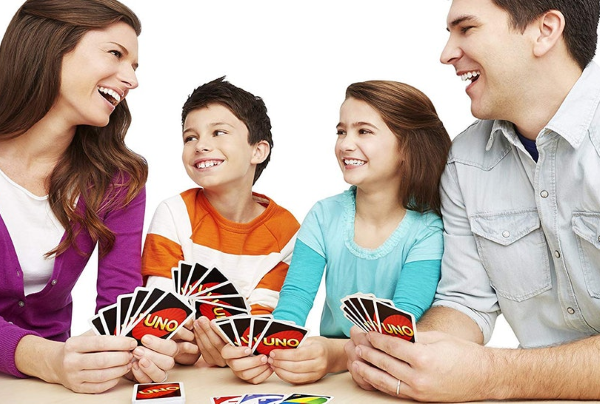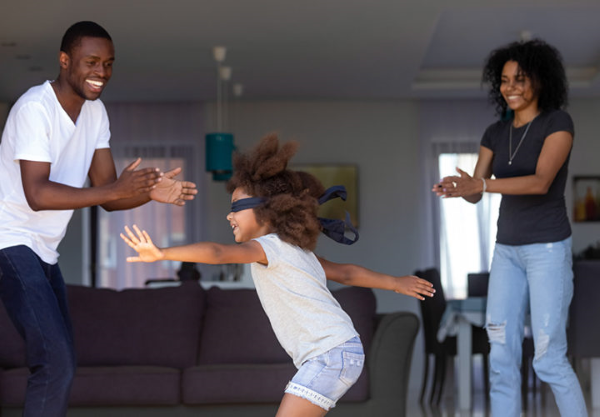Are you out of ideas on how to turn a day or night with your friends into a partying fun event? In this article, we will get creative, and help you out with some ideas on games to play at home when you have friends over, so no one will spend their time using their phones.
CHARADES
Charades is one of several games that employ confined communication to encourage players to use the theory of mind in novel ways.

This game is based on an older parlor game requiring any unique components or pre-made word cards. The following are the essential elements that all modern performances have in common:
- A one-minute timer
- A deck of word/picture cards
- A scoring device
- A set of rules
The theme of this game is communication. Communication is two-way. There’s a skill in acting, guessing, and even more skill in figuring out what to (attempt to) offer to get your team members to think right.
This game is on “thought theory” (or maybe “empathy” in old-speak). Players must rely on their instincts about what it’s like to be human.
UNO
Uno is a simple game to learn. Because it’s a card game, all you have to do to get started is shuffle the cards and divide them into two piles: DRAW and DISCARD.

The game’s goal is to be the first player to reach 500 points, with each round requiring you to utilize all of your cards. Players must try to play cards that match the color or number of the card in the middle as they go clockwise. A player must pick up a card if they do not have one that matches the turned card. Who can use wild cards at any moment during the game?
PROS AND CONS
Uno is a fantastic game that is simple enough for children to play alongside adults while also engaging. It’s a great way to travel, and you can find gamers who have created their versions of the game on the internet.
There aren’t many complaints with Uno, except that it’s primarily a game of chance. However, I believe that having a lot of unpredictability and the flurry of colors is part of the appeal.
PUZZLES
An excellent puzzle will help you exercise your creative, cognitive, and problem-solving muscles. You can either buy a ready-made variation or have the youngsters make their own.

Putting together a puzzle strengthens connections between brain cells, enhances mental speed, and is particularly helpful at improving short-term memory.
PROS
Mental exercise
Visual-Spatial Reasoning Improved
Collaboration and teamwork are improved
Increase your IQ by paying more attention to details
Increased productivity by improving memory
Problem-solving abilities
CONS
Puzzles might take your attention away from more vital jobs and objectives.
It’s easy to become frustrated if you don’t know the answer to a clue.
Puzzles have the potential to become addictive.
When it comes to crossword puzzles, some people cheat, making the game unfair for you.
Looking for additional games on improving cognitive performance and having fun at the same time, then see the selection here, and turn a day with your friends into an endless awesome memory.
HIDE AND SEEK
Hide and Seek is suitable for children of all ages. However, if you’re playing indoor hide and seek, you might want to limit the spaces where they can hide.

Hide-and-seek provides a youngster with some significant physical benefits as well, as the game helps them increase stamina and muscle development. In addition, the difficulty of finding the ideal hiding spot will help them develop their balance, agility, and coordination.
Hide-and-seek also has some critical physical benefits for children since it helps them boost their stamina and muscle development. In addition, the challenge of locating the proper hiding position will aid in the development of balance, agility, and coordination.
BLINDFOLD OBSTACLE COURSE
Assign everyone to a partner. Each team member wears a blindfold while the other navigates through a room full of hazards (a coffee table, chairs, a vacuum cleaner). When playing inside, one group should go at a time, and What should use a timer to keep track of how long each team takes.

Participants must stand in a straight line with their hands on the person’s shoulders in front of them while blindfolded. Then, when the timer goes off, the leader must take these people through a man-made obstacle course (that you built up) in the smallest amount of time possible.
Also Read: PROS & CONS OF SMART HOME TECHNOLOGY





